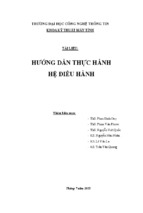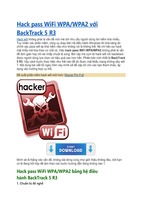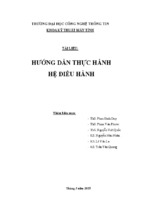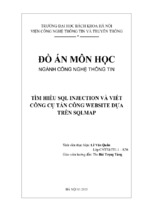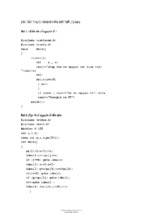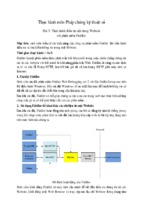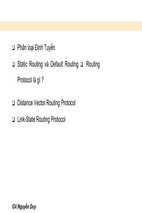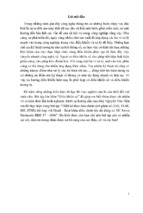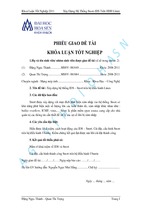•
•
OLE2 technology to efficiently extract only that portion of files that can carry
viruses
Pattern matching for detection of known viruses, as well as intelligent rule-based
scanning to detect unknown viruses
7.2.0 Background
Despite a significant increase in the usage of anti-virus products, the rate of computer
virus infection in corporate America has nearly tripled in the past year, according to a
survey released in April 1997 by the International Computer Security Association (ICSA),
formerly the National Computer Security Association. Virtually all medium and large
organizations in North America experienced at least one computer virus infection
firsthand, and the survey indicated that about 40 percent of all computers used in the
surveyed companies would experience a virus infection within a year.
Macro viruses, which unlike their predecessors, are carried in common word
processing documents and spreadsheets, are the biggest problem, representing
80% of all infections. Moreover, the instances of macro virus infection doubled about
every four months in 1996. This makes these viruses the fastest to spread in the
history of the ICSA.
The Number One macro virus encountered in the survey, by far, was the Concept
virus, also known as prank macro, wm-Concept, winword.Concept,
wordmacro.Concept, ww6, and ww6macro. Within months of its discovery in the fall
of 1995, the Concept virus accounted for more than three times the number of virus
encounters reported for the previous leader, the "Form virus." Today, the Concept
virus has infected almost one-half of all ICSA survey sites (see Figure 1).
Figure 1. The Concept virus and other Word macro viruses were the
dominant viruses encountered in 1997, according to a virus prevalence
survey conducted by the International Computer Security Association.
Perhaps even more worrying than the meteoric rise in infections by this particular
virus is what it bodes for the future. Microsoft Word™, Microsoft Excel™,
and other document and spreadsheet files were once thought to be immune to
184
infection. Since these virus carriers are now the most prevalent types of files
exchanged in the world, the threat of viruses has evolved in a big way. With the
exponential growth of the Internet for e-mail and file exchange, macro viruses now
represent the most widespread virus threat ever.
"Macro viruses are incredibly successful viruses," says Eva Chen, CTO of Trend
Micro. "Because they hitchhike on document and spreadsheet files, they can travel
both on floppy diskettes and across computer networks as attachments to electronic
mail. Then they spread quickly by taking advantage of e-mail, groupware, and
Internet traffic."
Adding to growing concern about these viruses is the ease of their creation. Prior to
the macro virus era, creating a virus required some knowledge of assembly
language or other complex programming language. Today, almost anyone can write
a macro virus using Visual Basic, which uses English-like commands (see Figure 2).
There is even a guided step-by-step template for creating Word macro viruses
available on the Internet.
Figure 2. Macro viruses written in visual basic are easier to write than
their assembly language predecessors.
While most of the more than 500 macro viruses known at the time of this writing are
not destructive, many cause a considerable loss of productivity and staff time.
Average financial cost per ‘virus disaster,’ according to the ICSA, rose to $8366 in
1997, and Figure 3 shows that virus incident costs are shifting from predominantly
low levels to intermediate levels. Concept restricts file saving operations, and other
macro viruses have been known to manipulate information, control data storage,
and even reformat hard drives. This potential destructiveness has system
administrators buzzing about how to address this new threat.
185
Figure 3. According to the ICSA 1997 Computer Virus Prevalence Survey,
the stated costs of virus incidents tended to shift from less than $2000
to the range of $2000-$99,000 [1].
7.2.1 Macro Viruses: How They Work
Understanding how to protect against macro viruses requires some knowledge
about what makes these viruses tick. Just when we thought we understood how
viruses work--by attaching executable code to other executable code in software-along come viruses that attach themselves to document files and spreadsheets.
How do macro viruses pull this off?
The answer is that there is more to today's word processing or spreadsheet file than
meets the eye.
Traditional files like these consist solely of text. But today's increasingly
sophisticated word processing and spreadsheet files carry macros with them that
can provide a variety of features to your documents and spreadsheets. For
example, macro commands can perform key tasks, such as saving files every few
minutes, or they can prompt you to type in information, such as a name and address
into a form letter. These macros, part of the document itself, travel with the file as it
is transferred from user to user, either via floppy diskette, file transfer, or e-mail
attachment.
Some of these macro commands have special attributes that force them to execute
automatically when the user performs various standard operations. For example,
Word uses five predefined macros, including the AutoOpen macro, which executes
when a user opens a Word document, and AutoClose, which runs when you close
the document.
186
Macro viruses gain access to word processing and spreadsheet files by attaching
themselves to the executable portion of the document--in AutoOpen, AutoExec,
AutoNew, AutoClose, AutoExit, and other file macros. For example, the Concept
virus attaches itself to AutoOpen and FileSaveAs in Word
(See Figure 4).
Figure 4. Concept latches onto one macro that is automatically run in
Word: AutoOpen. By attaching itself to AutoOpen, the virus takes control
as soon as an infected document is opened. Next, it infects the default
template. Then, by attaching itself to FileSaveAs, the virus effectively
spreads itself to any other document when it is saved.
Macro viruses are particularly difficult to eradicate because they can hide in
attachments to old e-mail messages. For example, the administrator of a network
infected by a macro virus may take pains to eliminate it. But when an employee
returns from a vacation and opens an e-mail attachment with the virus and forwards
it to others on the network, the virus can spread again, necessitating a second
round of detection and disinfection.
This migration of viruses to word processing and spreadsheet files mirrors user
computing patterns. In fact, this parallel evolution of viruses and computing media
has been going on for years. When the primary means of exchanging files was the
floppy diskette, the most prevalent viruses were boot sector infectors, which resided
on the first sector of a diskette. Later, the wide use of internal networks built around
file servers allowed viruses to spread by modifying executable files. Today, the
ICSA reports that commonly exchanged word processed and spreadsheet files sent
over the Internet as e-mail attachments are the most common carrier of viruses [1].
7.2.2 Detecting Macro Viruses
The increase in virus incidence despite rising anti-virus usage can lead to but one
conclusion. "It is obvious that existing virus protection software isn't working," says
187
Chen. "Traditional methods have not been successful in combating viruses entering
networks from new entry points--e-mail and the
Internet." Hence, the Concept virus seems to be aptly named, since dealing with it
and viruses like it reliably and effectively requires new concepts in virus detection.
The traditional approach to virus detection has been to gather samples of suspicious
code, conduct analysis, create new virus signature files, and distribute them to
customers.
Assuming that users periodically download updates of anti-virus software, this
approach works well for viruses that do not spread quickly and for viruses without
large numbers of variants. Many anti-virus software packages that take this
approach use pattern-matching algorithms to search for a string of code that signals
malicious actions. When virus writers began to foil this "fingerprint analysis" by
encrypting their code, anti-virus software developers responded by using the
decryption routine included with the virus, emulating operation of the code in an
isolated environment, and determining if the code was malicious.
Unfortunately, the Concept virus and other macro viruses often elude these
techniques for several reasons. The ease with which these viruses can be
developed, coupled with the vast number of word processing and spreadsheet
documents exchanged throughout the world every day via the Internet, is leading to
the rapid proliferation of many variants of each macro virus. Essentially, macro
viruses are spreading and mutating so fast that anti-virus software designed to
detect and remove them is obsolete soon after it is shipped to users.
Stopping Macro Viruses Requires New Approaches
The solution is to supplement pattern matching with a more sophisticated technique-analyzing the behavior of each macro and determining whether the macro's
execution would lead to malicious acts.
This enables detection and cleaning of even those macro viruses that have not yet
been captured and analyzed. But implementing this approach is not easy, requiring
intelligent, rule-based scanning.
A rule-based scanning engine should complement pattern matching with algorithms
to examine macro commands embedded in word processed and spreadsheet files
and identify malicious code. This type of solution should also instantly detects and
cleans known and unknown macro viruses, eliminating the time-consuming steps
that traditional virus approaches require (see Figure 5).
Figure 5. A new approach to stopping macro viruses detects and removes
even previously unknown macro viruses from word processed and
spreadsheet files.
188
To efficiently extract only the macro portion of each word processed or spreadsheet
file it examines, this new approach is based on OLE2 (object linking and
embedding) technology. Files such as those created in Word are also based on
OLE2 structure, which organizes each file into discreet components (e.g., document
and objects).
This new approach examines the document portion of the file only to identify key
information about the macros that accompany the document, such as the locations
of the macros (i.e., which "object" locations contain macros, as expressed in the
macro table). The anti-virus technology does not scan the (sometimes very long)
text portion of the file, since this portion cannot contain viruses. In addition to
maintaining high-speed scanning performance, this approach reduces the likelihood
of false positive virus indications -- possible when large text files are scanned.
After extracting the macro code, this approach compares it with patterns from known
viruses. If a match is found, the user is alerted. Otherwise, the anti-virus software
applies a comprehensive set of intelligent binary rules that can detect the presence
of almost all macro viruses. For example, if the macro code indicates it would
reformat a hard drive without prompting the user for approval to do so, the user
would be alerted of the virus. This is one part of several sets of such checks that are
performed. Since some macro viruses are activated when files are simply opened,
virus detection is performed on files before they are even opened by any
application.
Macro Virus Dependencies:
Application Popularity- The more common and "horizontal" the application, the
greater the risk. More specialized or vertical market-specific programs aren't
attractive enough to offer a large "breeding ground" for macro viruses.
Macro Language Depth- The extent of the application's macro language affects a
virus writer's ability to create a successful macro virus. Macro Implementation- Not
all programs embed macro commands into data files. For instance, AmiPro
documents will not necessarily contain "invisible" macro information. The easier it is
to transfer and execute the macro from within the application, the faster the spread
of the virus.
7.3 Is It a Virus?
Viruses Are Often Blamed for Non-Virus Problems
As awareness of computer viruses has grown, so has the tendency to blame "some kind
of virus" for any and every type of computing problem.
In fact, more cases of "not a virus" are encountered by customer support staff at
anti-virus vendors than are actual virus infections, and not only with inexperienced
189
users. Typical symptoms of viral infection such as unusual messages, screen color
changes, missing files, slow operation, and disk access or space problems may all
be attributable to non-virus problems.
Possible culprits include lost CMOS data due to a faulty system battery, another
user's misuse, fragmented hard disks, reboot corruption, or even a practical joke.
For instance, some PCs play the Happy Birthday song through their speakers every
November 13. Sounds like a virus payload, but it happens only in computers
containing BIOS chips from a certain batch that was sabotaged by a former
programmer at the BIOS vendor. Switching out the BIOS chip eliminates the annual
singing message.
Even deliberately written unwelcome programs are not always viruses...
As stated before, a multitude of hardware and software incompatibilities and/or bugs
may cause virus-like symptoms, but there is also the in-between world of
destructive, deliberately designed programs which still are not viruses. Again, it is
important to remember that the key distinction of viruses is their ability to replicate
and spread without further action by their perpetrators. Some non-virus programs
are more destructive than many actual viruses.
Non-virus threats to user systems include Worms, Trojan Horses and Logic Bombs.
In addition to the potential for damage these programs can bring by themselves, all
three types can also be used as vehicles for virus program propagation.
7.3.0 Worms
Network worm programs use network connections to spread from system to system,
thus network worms attack systems that are linked via communications lines. Once
active within a system, a network worm can behave as a computer virus, or it could
implant Trojan horse programs or perform any number of disruptive or destructive
actions. In a sense, network worms are like computer viruses with the ability to
infect other systems as well as other programs. Some people use the term virus to
include both cases.
To replicate themselves, network worms use some sort of network vehicle,
depending on the type of network and systems. Examples of network vehicles
include:
•
•
•
a network mail facility, in which a worm can mail a copy of itself to other
systems,
a remote execution capability, in which a worm can execute a copy of itself on
another system,
a remote login capability, whereby a worm can log into a remote system as a
user and then use commands to copy itself from one system to the other.
The new copy of the network worm is then run on the remote system, where it may
continue to spread to more systems in a like manner. Depending on the size of a
network, a network worm can spread to many systems in a relatively short amount
of time, thus the damage it can cause to one system is multiplied by the number of
systems to which it can spread.
A network worm exhibits the same characteristics as a computer virus: a replication
mechanism, possibly an activation mechanism, and an objective. The replication
mechanism generally performs the following functions:
190
•
•
•
searches for other systems to infect by examining host tables or similar
repositories of remote system addresses
establishes a connection with a remote system, possibly by logging in as a
user or using a mail facility or remote execution capability
copies itself to the remote system and causes the copy to be run
The network worm may also attempt to determine whether a system has previously
been infected before copying itself to the system. In a multi-tasking computer, it may
also disguise its presence by naming itself as a system process or using some other
name that may not be noticed by a system operator.
The activation mechanism might use a time bomb or logic bomb or any number of
variations to activate itself. Its objective, like all malicious software, is whatever the
author has designed into it. Some network worms have been designed for a useful
purpose, such as to perform general "house-cleaning" on networked systems, or to
use extra machine cycles on each networked system to perform large amounts of
computations not practical on one system. A network worm with a harmful objective
could perform a wide range of destructive functions, such as deleting files on each
affected computer, or by implanting Trojan horse programs or computer viruses.
Two examples of actual network worms are presented here. The first involved a
Trojan horse program that displayed a Christmas tree and a message of good cheer
(this happened during the Christmas season). When a user executed this program,
it examined network information files, which listed the other personal computers that
could receive mail from this user. The program then mailed itself to those systems.
Users who received this message were invited to run the Christmas tree program
themselves, which they did. The network worm thus continued to spread to other
systems until the network was nearly saturated with traffic. The network worm did
not cause any destructive action other than disrupting communications and causing
a loss in productivity [BUNZEL88].
The second example concerns the incident whereby a network worm used the
collection of networks known as the Internet to spread itself to several thousands of
computers located throughout the United States. This worm spread itself
automatically, employing somewhat sophisticated techniques for bypassing the
systems' security mechanisms. The worm's replication mechanism accessed the
systems by using one of three methods:
•
•
•
it employed password cracking, in which it attempted to log into systems using
usernames for passwords, as well as using words from an on-line dictionary
it exploited a trap door mechanism in mail programs which permitted it to
send commands to a remote system's command interpreter
it exploited a bug in a network information program which permitted it to
access a remote system's command interpreter
By using a combination of these methods, the network worm was able to copy itself
to different brands of computers, which used similar versions of a widely used
operating system. Many system managers were unable to detect its presence in
their systems, thus it spread very quickly, affecting several thousands of computers
within two days. Recovery efforts were hampered because many sites
disconnected from the network to prevent further infections, thus preventing those
sites from receiving network mail that explained how to correct the problems.
It was unclear what the network worm's objective was, as it did not destroy
information, steal passwords, or plant viruses or Trojan horses. The potential for
191
destruction was very high, as the worm could have contained code to effect many
forms of damage, such as to destroy all files on each system.
7.3.1 Trojan Horses
A Trojan horse program is a useful or apparently useful program or command
procedure containing hidden code that, when invoked, performs some unwanted
function. An author of a Trojan horse program might first create or gain access to
the source code of a useful program that is attractive to other users, and then add
code so that the program performs some harmful function in addition to its useful
function. A simple example of a Trojan horse program might be a calculator
program that performs functions similar to that of a pocket calculator. When a user
invokes the program, it appears to be performing calculations and nothing more,
however it may also be quietly deleting the user's files, or performing any number of
harmful actions. An example of an even simpler Trojan horse program is one that
performs only a harmful function, such as a program that does nothing but delete
files. However, it may appear to be a useful program by having a name such as
CALCULATOR or something similar to promote acceptability.
Trojan horse programs can be used to accomplish functions indirectly that an
unauthorized user could not accomplish directly. For example, a user of a multiuser system who wishes to gain access to other users' files could create a Trojan
horse program to circumvent the users' file security mechanisms. The Trojan horse
program, when run, changes the invoking user's file permissions so that the files are
readable by any user. The author could then induce users to run this program by
placing it in a common directory and naming it such that users will think the program
is a useful utility. After a user runs the program, the author can then access the
information in the user’s files, which in this example could be important work or
personal information. Affected users may not notice the changes for long periods
unless they are very observant.
An example of a Trojan horse program that would be very difficult to detect would be
a compiler on a multi-user system that has been modified to insert additional code
into certain programs as they are compiled, such as a login program. The code
creates a trap door in the login program, which permits the Trojan horse's author to
log onto the system using a special password. Whenever the login program is
recompiled, the compiler will always insert the trap door code into the program; thus,
the Trojan horse code can never be discovered by reading the login program’s
source code. For more information on this example, see [THOMPSON84].
Trojan horse programs are introduced into systems in two ways, they are initially
planted and unsuspecting users copy and run them. They are planted in software
repositories that many people can access such as on personal computer network
servers, publicly accessible directories in a multi-user environment, and software
bulletin boards. Users are then essentially duped into copying Trojan horse
programs to their own systems or directories. If a Trojan horse program performs a
useful function and causes no immediate or obvious damage, a user may continue
to spread it by sharing the program with other friends and co-workers. The compiler
that copies hidden code to a login program might be an example of a deliberately
planted Trojan horse that could be planted by an authorized user of a system, such
as a user assigned to maintain compilers and software tools.
7.3.2 Logic Bombs
Logic Bombs are a favored device for disgruntled employees who wish to harm their
company after they have left its employ. Triggered by a timing device, logic bombs
192
can be highly destructive. The "timer" might be a specific date (i.e., the logic bomb
that uses Michelangelo's birthday date to launch "his" virus embedded within). An
event can also be the designed-in trigger (such as after the perpetrator's name is
deleted from a company's payroll records).
7.3.3 Computer Viruses
Computer viruses, like Trojan horses, are programs that contain hidden code, which
performs some usually unwanted function. Whereas the hidden code in a Trojan
horse program has been deliberately placed by the program's author, the hidden
code in a computer virus program has been added by another program, that
program itself being a computer virus or Trojan horse. Thus, computer viruses are
programs that copy their hidden code to other programs, thereby infecting them.
Once infected, a program may continue to infect even more programs. In due time,
a computer could be completely overrun as the viruses spread in a geometric
manner.
An example illustrating how a computer virus works might be an operating system
program for a personal computer, in which an infected version of the operating
system exists on a diskette that contains an attractive game. For the game to
operate, the diskette must be used to boot the computer, regardless of whether the
computer contains a hard disk with its own copy of the (uninfected) operating
system program. When the computer is booted using the diskette, the infected
program is loaded into memory and begins to run. It immediately searches for other
copies of the operating system program, and finds one on the hard disk. It then
copies its hidden code to the program on the hard disk. This happens so quickly
that the user may not notice the slight delay before his game is run. Later, when the
computer is booted using the hard disk, the newly infected version of the operating
system will be loaded into memory. It will in turn look for copies to infect. However,
it may also perform any number of very destructive actions, such as deleting or
scrambling all the files on the disk.
A computer virus exhibits three characteristics: a replication mechanism, an
activation mechanism, and an objective.
The replication mechanism performs the following functions:
•
•
•
•
•
searches for other programs to infect
when it finds a program, possibly determines whether the program has been
previously infected by checking a flag
inserts the hidden instructions somewhere in the program
modifies the execution sequence of the program's instructions such that the
hidden code will be executed whenever the program is invoked
possibly creates a flag to indicate that the program has been infected
The flag may be necessary because without it, programs could be repeatedly
infected and grow noticeably large. The replication mechanism could also perform
other functions to help disguise that the file has been infected, such as resetting the
program file's modification date to its previous value, and storing the hidden code
within the program so that the program's size remains
the same.
The activation mechanism checks for the occurrence of some event. When the
event occurs, the computer virus executes its objective, which is generally some
unwanted, harmful action. If the activation mechanism checks for a specific date or
time before executing its objective, it is said to contain a time bomb. If it checks for a
193
certain action, such as if an infected program has been executed a preset number
of times, it is said to contain a logic bomb. There may be any number of variations,
or there may be no activation mechanism other than the initial execution of the
infected program.
As mentioned, the objective is usually some unwanted, possibly destructive event.
Previous examples of computer viruses have varied widely in their objectives, with
some causing irritating but harmless displays to appear, whereas others have
erased or modified files or caused system hardware to behave differently. Generally,
the objective consists of whatever actions the author has designed into the virus.
As with Trojan horse programs, computer viruses can be introduced into systems
deliberately and by unsuspecting users. For example, a Trojan horse program
whose purpose is to infect other programs could be planted on a software bulletin
board that permits users to upload and download programs. When a user
downloads the program and then executes it, the program proceeds to infect other
programs in the user's system. If the computer virus hides itself well, the user may
continue to spread it by copying the infected program to other disks, by backing it
up, and by sharing it with other users. Other examples of how computer viruses are
introduced include situations where authorized users of systems deliberately plant
viruses, often with a time bomb mechanism. The virus may then activate itself at
some later point in time, perhaps when the user is not logged onto the system or
perhaps after the user has left the organization.
7.3.4 Anti-Virus Technologies
Without control of the "human element" and proper implementation, anti-virus
software alone cannot provide full protection.
However, it is still the critical element in the fight against viruses. As stated before,
non-virus problems may appear to be virus related, even to sophisticated users.
Without anti-virus software, there is no conclusive way to rule out viruses as the
source of such problems and then arrive at solutions.
Effective anti-virus software must be capable of performing three main tasks: Virus
Detection, Virus Removal (File Cleaning) and Preventive Protection. Of course,
detection is the primary task ad the anti-virus software industry has developed a
number of different detection methods, as follows.
Five Major Virus Detection Methods:
•
Integrity Checking (aka Checksumming) - Based on determining, by comparison,
whether virus-attacked code modified a program's file characteristics. As it is not
dependent on virus signatures, this method does not require software updates at
specific intervals.
•
Limitations - Does require maintenance of a virus-free Checksum database;
allows the possibility of registering infected files; Unable to detect passive and
active stealth viruses; Cannot identify detected viruses by type or name.
•
Interrupt Monitoring - Attempts to locate and prevent a virus "interrupt calls"
(function requests through the system's interrupts).
194
•
Limitations - Negative effect on system resource utilization; May flag "legal"
system calls and therefore be obtrusive; Limited success facing the gamut of
virus types and legal function calls.
•
Memory Detection - Depends on recognition of a known virus' location and code
while in memory; Generally successful.
•
Limitations - As in Interrupt Monitoring, can impose impractical resource
requirements; Can interfere with valid operations.
•
Signature Scanning - Recognizes a virus' unique "signature," a pre-identified set
of hexadecimal code, making it highly successful at virus identification.
•
Limitations - Totally dependent on maintaining current signature files (as
software updates from vendor) and scanning engine refinements; May make
false positive detection in valid file.
•
Heuristic/Rules-based Scanning - Faster than traditional scanners, method uses
a set of rules to efficiently parse through files and quickly identify suspect code
(aka Expert Systems, Neural Nets, etc.).
•
Limitations - Can be obtrusive; May cause false alarms; Dependent on the
currency of the rules set.
All five techniques can usually perform on-access or on-demand scans, for both network
servers and work-stations. On-access scanning is analogous to a building'' automatic
sprinkler system –virus scanning is automatically initiated on file access, such as when a
disk is inserted, a file is copied or a program is executed. On-demand scanning is more
like a fire extinguisher - requiring user initiation (but may also be set up to continue
scanning at regular intervals or at system startup).
Today, all effective products leverage a combination of detection methods because
of the large number of virus types and their many tricks for invasion and disguise.
Anti-virus software is a constantly evolving field, and as the knowledge base
deepens, vendors can further refine these methods and develop even more
effective future solutions.
7.4 Anti-Virus Policies and Considerations
The best anti-virus software in the world cannot protect you if it is not deployed
systematically throughout the enterprise (even if "the enterprise" is a single homebased computer!).
Many people think they can dismiss a disk, shared or e-mailed file because it came
from someone they know and trust. What they aren't considering is that their friend
colleague, customer or vendor is working on another system, with its own set of
vulnerabilities from different outside conditions.
Computer users must recognize that the virus threat is too pervasive today to be
ignored by anyone...the number of users who never come into contact with others'
files is small and becoming smaller every day, especially with the tremendous
growth of online services and Internet usage.
195
7.4.0 Basic "Safe Computing" Tips
•
•
•
•
•
Use and update anti-virus software regularly
Scan any newly received disks and files before loading, opening, copying, etc.
Never assume disks and/or files are virus-free
To help avoid boot viruses, do not leave diskettes in your computer when
shutting it down.
Change your computer's CMOS boot sequence to start with the C drive first, then the
A drive.
For offices or homes with one or two computers, following these basic rules faithfully is
probably adequate protection. However, in organizations with multiple PCs, especially in
networks, a sound anti-virus strategy will necessarily be more complex.
This is because vulnerability to viruses increases in proportion to the number of
machines, the extent of their interconnection, and the number of non-technical users who
may view anti-virus vigilance as "someone else's job." (In contrast, a solo entrepreneur is
likely to take the virus threat seriously because he or she will have to deal with infection
results personally or pay an outside consultant.)
All organizations are different in the way they operate and the industries they serve, so no
one anti-virus scheme is correct for all enterprises. However, at the very least, a
company's program should include ongoing user education and a system for tracking
virus activity (suspect and real) in addition to using anti-virus software.
Ultimately, your goal is to provide consistent, effective protection and a "damage control
and recovery" plan for virus infections that may occur despite your efforts. In addition, and
perhaps most importantly, you want to achieve this while minimizing any negative impact
on staff productivity and system/network resources.
Therefore, to formulate a comprehensive anti-virus plan, it is necessary to first analyze
the "bit picture" of your organization along with its more detailed computing
characteristics.
5 Key Factors in Anti-Virus Program Planning
1. The number and density of personal computers
The more PCs you have, or the higher the ratio of computers to people, the more
you need a formalized, thoroughly documented anti-virus program.
2. The degree of interconnection between computers
"Interconnection" does not necessarily mean electronically networked. If data is
frequently moved from one PC to another via diskettes or other media, those
computers are effectively connected, whether they are separated by a few yards or
many miles. Again, the frequency of data interchange may be as important as the
methods of transfer.
3. How many locations are involved in the anti-virus plan
Assuming that multiple locations are involved because they are linked via data
communications, more locations will require more coordination and reporting
between the various IT staffs, as well as more user training.
196
4. The operational pace of the enterprise
Every organization has an inherent pace of operations, mostly dependent on the
nature of its business. No matter how "busy" it is, a research laboratory's pace will
not be as fast as that of a securities brokerage firm. In general, the faster the pace of
operations, the greater the risk of virus infection because of the faster rate at which
new data is being generated and distributed.
faster pace = more frequent
new data = greater risk !
5. Whether there is a high level of transaction processing
If massive and timely data exchange is typical, the plan must yield the highest
possible level of anti-virus security, along with comprehensive backup. Even weekly
backups won't be adequate if vital data captured in real-time has been violated by a
virus infection since the last backup.
Balance: Implementing Security by Function
Whatever the profile of your organization's computing characteristics and virus
vulnerability, it is important to remember that anti-virus measures must be balanced in
relation to the actual functions of various machines and their users.
Even within a specific location of the enterprise, there may be computers for which you
need to sacrifice some level of anti-virus security in order to maintain necessary
throughput and/or productivity. Cost is another factor that must be balanced against
"ideal" protection levels, for all equipment and personnel in the organization.
7.4.1 Anti-Virus Implementation Questions
•
•
•
•
•
•
•
•
•
•
•
Are there any PCs that should not be included in the anti-virus program? (For
instance, computers that are isolated, diskless or used solely for manual data entry.)
What special procedures should apply to the headquarters network, as opposed to
branch offices?
How should user reports of suspected virus activity be handled? What is a realistic
(vs desired) response time?
In response to an apparent virus infection, what procedures should users be
authorized and trained to perform by themselves?
How should suspected and/or actual virus infections, and resulting counter
measures, be recorded and reported? (It is important to log routine anti-virus scans
as well as suspicious situations.)
Who is responsible for maintaining these possibly exhaustive records?
What improvements to existing backup procedures might be necessary? (Note that
the common practice of rotating backup media might cause clean data to be
replaced by infected data.)
An anti-virus policy and procedures manual will need to be created and then
maintained...who will take charge?
How will you establish a "baseline" virus-free environment for the new anti-virus
program to maintain?
How will the schedule for adoption of a new virus control program be established?
How will you balance simultaneous needs for speed and low cost?
Who will provide the funding for the anti-virus program staff, development and
software? Is upper management fully behind the program?
197
7.4.2 More Virus Prevention Tips
•
•
•
•
•
•
Write-protect any data source diskette before inserting it in the drive, and then use
anti-virus software to scan it before doing anything else.
Include in your policy and training that employees who work on computers at home
must follow the same anti-virus procedures they use at the office (whether on
personal machines or company-supplied portables.)
Even with the above policy in place, handle disks brought back from employees'
homes as foreign disks, following the write-protect and scanning procedure
Consider any suspicious computer behavior to be possible virus-related and followup accordingly.
Files that must be received from outside the organization, such as from the Internet,
should be downloaded directly to quarantined scanning areas whenever possible.
You may want to consider dedicating an isolated computer (not connected in any
way to the network) to the task of testing all new files and/or diskettes. Then all files
on the control machine can be systematically scanned for viruses before anyone has
access to them. (Note that some compressed files may have to be decompressed
before scanning.)
Take Advantage of Vendor Expertise
The larger your network, and/or the more sensitive your enterprise's data security
position, the more you should seek guidance from industry peers and the anti-virus
software industry before finalizing your plan.
Representatives from the leading vendors have experience in providing anti-virus
solutions for many different kinds of distributed environments, in many different
industries. Plus, their training programs and consulting services can be invaluable,
helping to prevent both costly virus incidents and ensuring that your program is more
cost-effective.
7.4.3 Evaluating Anti-Virus Vendors
Although anti-virus software companies design their products to detect and remove
viruses, there is more to making a smart choice than comparing detection rates and/or
product prices.
The fact that anti-virus software is necessary for everyone in the enterprise means that it
must work alongside a variety of applications, and probably on multiple computing
platforms within the location. Therefore, a common anti-virus product that can work
"seamlessly" throughout the enterprise is desirable, for both cost-effectiveness and
simpler administration.
The software must also be effective against the majority of common and damaging
viruses, yet be as unobtrusive to productivity as possible. (Bear in mind that this is as
important for user compliance as for the bottom line - if users feel hampered by anti-virus
procedures they may "overlook" them in their haste to get work done.)
Another major factor to consider is the burgeoning number of viruses - as many as 200
new ones each month. Anti-virus software that does not include regular updates cannot
provide adequate protection for long.
198
7.4.4 Primary Vendor Criteria
To ensure that you are providing the best possible solution, the anti-virus vendor you
ultimately choose should satisfy the following primary criteria:
•
•
•
Technological Strength - Demonstrably superior virus detection rates; leadership,
quality assurance and timeliness in releasing new products and updates; Good
grasp of technological trends that may impact your organization in the future.
Infrastructure - Company resources in terms of financial health and strategic
alliances to provide for ongoing development; Size and experience level of customer
support staff; Size and scope of current user base; Ability to handle complex
contracts smoothly.
Relationships - Vendors who offer only technological strength, or excellent service
with mediocre technology, will be inferior choices for an enterprise-wide anti-virus
program. To get the most out of your anti-virus efforts, base them on software from a
company that can sustain long-term relationships and provide excellent anti-virus
technology.
While investigating anti-virus vendors and products, be sure to also assess these cost of
ownership issues:
•
•
•
•
•
•
•
•
Types of licenses available
Variety of platforms supported
Cost of updates for virus signatures and product releases
Emergency services available
Customer training (on and/or off-site)
Consulting services available
Maintenance agreements
Contract terms and guarantees
In determining what is needed from the vendor, and the best contract arrangements,,
evaluators should also consider their in-house support and training resources, as well as
the organization's growth potential and plans for introducing any new computing
platforms.
199
Section References
7.1 NAI White Paper. “Current Computer Virus Threats, Countermeasures and
Strategic Solutions”.1997
7.2 Landry, Linda, Trapping the World's Most Prevalent Viruses. Trend Micro, Inc.
1998
"ICSA 1997 Computer Virus Prevalence Survey, ICSA.
"Roll-Your-Own Macro Virus," Virus Bulletin, September, 1996, p. 15.
Joe Wells, "Concept: Understanding the Virus and Its Impact," Trend Micro, Incorporated.
"ICSA 1997 Computer Virus Prevalence Survey, ICSA.
7.3 NAI White Paper. “Current Computer Virus Threats, Countermeasures and
Strategic Solutions”.1997
7.3.0 Wack, John P and Carnahan, Lisa J. Computer Viruses and Related Threats:A
Management Guide. NIST Special Publication 500-166. U.S Dept of Commerce
BUNZEL88 Bunzel, Rick; Flu Season; Connect, Summer 1988.
DENNING88 Denning, Peter J.; Computer Viruses; American Scientist, Vol 76, May-June,
1988.
DENNING89 Denning, Peter J.; The Internet Worm; American Scientist, Vol 77, March-April,
1989.
FIPS73 Federal Information Processing Standards Publication 73, Guidelines for Security of
Computer Applications; National Bureau of Standards, June, 1980.
FIPS112 Federal Information Processing Standards Publication 112, Password Usage;
National Bureau of Standards, May, 1985.
MACAFEE89 McAfee, John; The Virus Cure; Datamation, Feb 15, 1989.
NBS120 NBS Special Publication 500-120; Security of Personal Computer Systems: A
Management Guide; National Bureau of Standards, Jan 1985.
SPAFFORD88 Spafford, Eugene H.; The Internet Worm Program: An Analysis; Purdue
Technical Report CSD-TR-823, Nov 28, 1988.
THOMPSON84 Thompson, Ken; Reflections on Trusting Trust (Deliberate Software Bugs);
Communications of the ACM, Vol 27, Aug 1984.
7.3.1 Wack, John P and Carnahan, Lisa J. Computer Viruses and Related Threats:A
Management Guide. NIST Special Publication 500-166. U.S Dept of Commerce
BUNZEL88 Bunzel, Rick; Flu Season; Connect, Summer 1988.
DENNING88 Denning, Peter J.; Computer Viruses; American Scientist, Vol 76, May-June,
1988.
DENNING89 Denning, Peter J.; The Internet Worm; American Scientist, Vol 77, March-April,
1989.
FIPS73 Federal Information Processing Standards Publication 73, Guidelines for Security of
Computer Applications; National Bureau of Standards, June, 1980.
FIPS112 Federal Information Processing Standards Publication 112, Password Usage;
National Bureau of Standards, May, 1985.
MACAFEE89 McAfee, John; The Virus Cure; Datamation, Feb 15, 1989.
NBS120 NBS Special Publication 500-120; Security of Personal Computer Systems: A
Management Guide; National Bureau of Standards, Jan 1985.
SPAFFORD88 Spafford, Eugene H.; The Internet Worm Program: An Analysis; Purdue
Technical Report CSD-TR-823, Nov 28, 1988.
200
THOMPSON84 Thompson, Ken; Reflections on Trusting Trust (Deliberate Software Bugs);
Communications of the ACM, Vol 27, Aug 1984.
7.3.2 NAI White Paper. “Current Computer Virus Threats, Countermeasures and
Strategic Solutions”.1997
7.3.3 Wack, John P and Carnahan, Lisa J. Computer Viruses and Related Threats:A
Management Guide. NIST Special Publication 500-166. U.S Dept of Commerce
BUNZEL88 Bunzel, Rick; Flu Season; Connect, Summer 1988.
DENNING88 Denning, Peter J.; Computer Viruses; American Scientist, Vol 76, May-June,
1988.
DENNING89 Denning, Peter J.; The Internet Worm; American Scientist, Vol 77, March-April,
1989.
FIPS73 Federal Information Processing Standards Publication 73, Guidelines for Security of
Computer Applications; National Bureau of Standards, June, 1980.
FIPS112 Federal Information Processing Standards Publication 112, Password Usage;
National Bureau of Standards, May, 1985.
MACAFEE89 McAfee, John; The Virus Cure; Datamation, Feb 15, 1989.
NBS120 NBS Special Publication 500-120; Security of Personal Computer Systems: A
Management Guide; National Bureau of Standards, Jan 1985.
SPAFFORD88 Spafford, Eugene H.; The Internet Worm Program: An Analysis; Purdue
Technical Report CSD-TR-823, Nov 28, 1988.
THOMPSON84 Thompson, Ken; Reflections on Trusting Trust (Deliberate Software Bugs);
Communications of the ACM, Vol 27, Aug 1984.
7..3.4 NAI White Paper. “Current Computer Virus Threats, Countermeasures and
Strategic Solutions”.1997
7.4 NAI White Paper. “Current Computer Virus Threats, Countermeasures and
Strategic Solutions”.1997
201
8.0 Virtual Private Networks: Introduction
8.1 Making Sense of Virtual Private Networks
The VPN market is on the verge of explosive growth. A virtual private network (VPN)
broadly defined, is a temporary, secure connection over a public network, usually
the Internet. Though the term is relatively new, everyone from the telcos, to
operating system vendors, to firewall suppliers and router companies has rushed to
offer some type of VPN capability. Why? Because VPNs make sense, and as a
result, the market is expected to reach at least several billion dollars by the year
2001.
By leveraging the Internet, VPNs offer significant cost savings, greater flexibility, and
easier management relative to traditional internetworking methods, such as leased
lines and dial-up remote access.
However, choosing an appropriate solution from the recent flood of VPN offerings
can be a difficult task for information technology managers who have no spare time.
Each solution presents varying levels of security, performance, and usability, and
each has its benefits and drawbacks.
Though a catch-all Internet security solution sounds appealing, there is currently no
product that can equally address the different aspects of securing online
communication. As a result, the VPN market has begun to stratify according to
corporate demands for tighter security, better performance, and effortless usability
and management. To select an appropriate product, IT managers should be able to
define their corporation's particular business needs. For instance, does the company
only need to connect a few trustworthy remote employees to corporate
headquarters, or does the company hope to create a secure communications
channel for its branch offices, partners, suppliers, customers, and remote
employees?
At minimum, a VPN should encrypt data over a dynamic connection on a public
network to protect the information from being revealed if intercepted. Beyond that
basic function, VPN features customarily include tools for authentication, and a
limited number provide integrated access control and authorization capabilities. In
addition to enumerating the possible VPN components, this white paper outlines the
predominate VPN technologies and interprets the nuances of different VPN
approaches so IS professionals can better decide how to secure their corporate
communication.
8.2 Defining the Different Aspects of Virtual Private Networking
Before online business can truly reach its potential, corporations must feel comfortable
using the Internet as the backbone for secure communication. VPNs are the first real
step toward that end. When implemented correctly, they protect networks from viruses,
snoops, corporate spies, and any other known threat that results from mistakes in
configuration, poorly implemented access controls, lack of system management, weak
authentication, and "back-door" entry points to the network.
202
Sample VPN Requirements to Consider
Security
Interoperability
Ease-of-Use
•
•
•
•
•
•
•
Can the VPN support
Strong authentication,
including token cards,
smart cards, biometrics
(i.e. fingerprint and iris
scanning),x.509
certificates and Kerberos?
Can the VPN support
strong encryption,
including key sizes
40, 56, and 128 and
ciphers RC4, DES,
and Triple DES?
Can the VPN filter
datastreams,
including viruses, file
types, Java and
Active X, and
protocols such as
FTP, Telnet, etc.?
Can the VPN support
role-based access
control according to
parameters such as
type of
authentication, type
of encryption, user
identity, time of day,
source address,
destination address,
and type of
application?
Can the VPN monitor,
log, and audit all
network traffic?
Does the VPN have
some type of alarm to
notify an
administrator of
specific events?
•
Is the VPN based on
public standards?
•
Can the VPN be
integrated easily
with perimeter
security, such as a
firewall or router?
Is the VPN
compatible with
other protocols such
as IPv4, IPSec, and
PPTP/L2TP?
Can the VPN
support all critical
authentication and
encryption
standards?
Can the VPN
support all
application types?
Can the VPN
function in a
cross-platform
environment,
including all
Windows and UNIX
operating systems?
Does the VPN map
to standard NT,
Netware, RADIUS,
and ACE
databases?
Does the VPN
support a variety of
methods of load
balancing?
•
•
•
•
•
•
•
•
•
•
Does the VPN offer
a low-impact client
for the desktop?
Is the client
transparent to the
end-user?
Does the VPN
permit single
sign-on, or does
the user have to
log on each time an
application is
launched?
Can the VPN
system scale to
support hundreds
of thousands of
users?
Does the VPN
centralize
management of the
security system?
Does the VPN run
on standard NT
and UNIX
operating
systems?
The three fundamental features that define virtual private networking are encryption,
authentication, and access control. While strong authentication and encryption are critical
components of the VPN, they are relatively simple to deploy and verify. Access control,
on the other hand, is relatively complex because its deployment is tied intimately to every
other security tool. Roughly speaking, the security of a VPN is a function of how tightly
authentication, encryption, and access control are connected. If one component is
lacking, the VPN will be lacking.
Where a company might use a guarded gate in the physical world to block all
unauthorized visitors, a firewall might be used in the analogous VPN world. Until
203
- Xem thêm -


